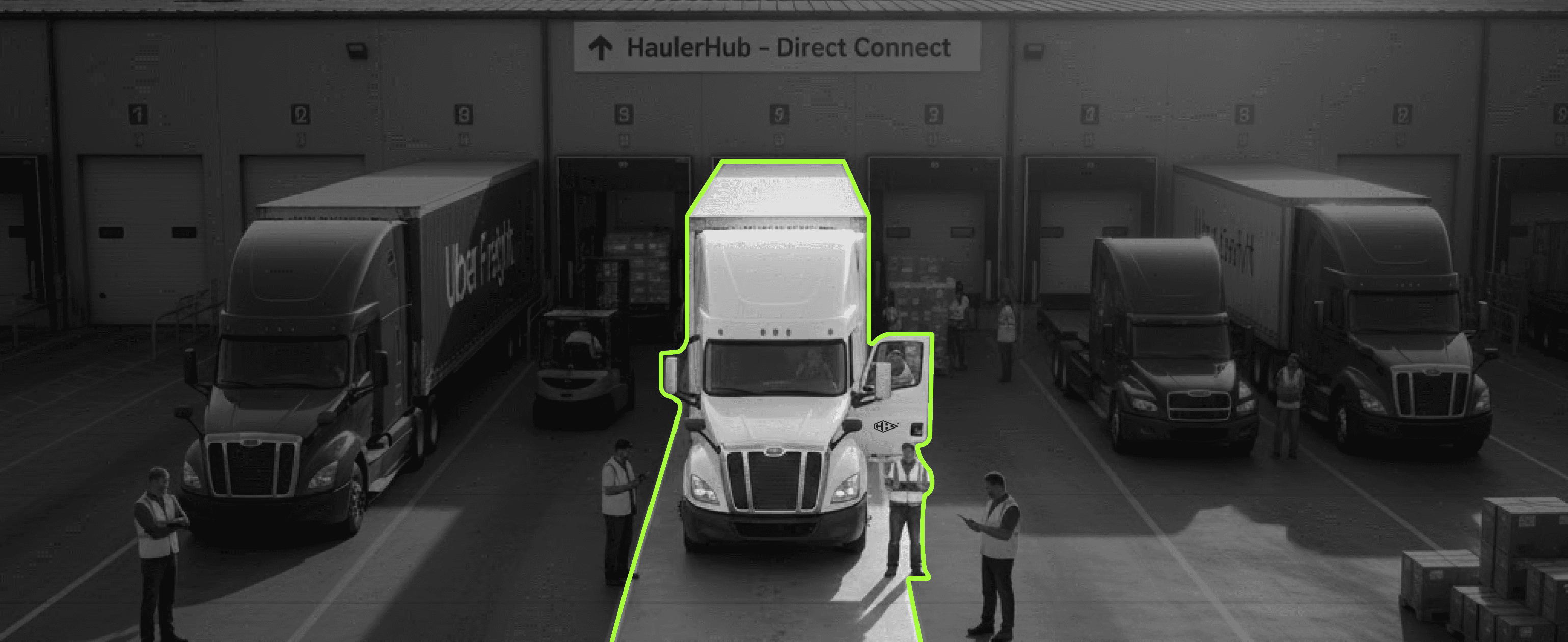Apr 23, 2025
Scroll to explore
Are you tired of watching your freight costs eat away at your company's profits? As a logistics manager, you're juggling countless details, and high shipping expenses are not helping your efforts to reduce your freight costs. The worry of rising costs and the stress of managing multiple logistics providers can keep anyone awake at night.
But what if you could cut those costs without overhauling your entire system? This guide is here to show you simple yet effective ways to slash your freight expenses, keep everything running smoothly, and maintain the service quality your customers expect.
What You Will Learn
Smart strategies to reduce freight costs without a logistical nightmare.
Tips for better shipment tracking and timely deliveries.
Ways to improve freight visibility and avoid costly delays.
How leveraging technology can bring transparency and save money.
Let's dive in and explore how you can manage freight costs effectively, making sure your logistics operations stay lean and efficient.
Step 1: Consolidate Your Shipments
Are you aware that shipping less can cost you more? This common pitfall is often overlooked in logistics. Smaller shipments tend to incur higher per-unit costs. Consolidating your shipments can be a straightforward way to cut costs.
Consider this: If your warehouse is sending out half-full containers, you're effectively doubling your freight expenses. Instead, evaluate your shipment schedules and see where you can consolidate.
Example: A mid-sized electronics company slashed yearly shipping costs by 15% by consolidating their twice-weekly smaller shipments into a single weekly shipment. This not only reduced costs but also simplified scheduling.
Tip: Here are some tips on how to reduce shipping costs effectively. Work with your carriers to understand when to combine smaller shipments. Often, they offer discounts for larger, consolidated loads.
Challenges: Be mindful of scheduling and inventory management. It might require closer coordination with your suppliers to make the most of consolidation.
Step 2: Choose the Right Mode of Transportation
Ever wondered if you're using the most cost-effective transportation mode? The mode you choose can significantly impact your freight costs. Here's a quick breakdown:
Air Freight is fast but expensive. Best kept for high-value items or urgent deliveries.
Truck Shipping offers door-to-door service, great for flexible scheduling.
Rail Freight is perfect for bulk shipments that aren't in a rush.
Ocean Freight is cost-effective for international bulk shipments, though it takes longer.
Example: A furniture retailer switched 30% of their shipments from air to rail, saving a hefty 20% in freight costs over the year.
Tip: Review your current mode usage and compare costs. You may find opportunities to switch modes for certain shipments.
Potential Pitfalls: Each mode has its trade-offs. Timing is key, so align your transportation mode with delivery expectations to maintain customer satisfaction.
Step 3: Leverage Technology to Reduce Freight Costs

Is the uncertainty of shipment status driving you crazy? It's time to integrate technology into your logistics operations.
Real-time tracking tools and Transportation Management Systems (TMS) not only make operations smoother but also help in forecasting and decision-making.
Example: Businesses using HaulerHub's platform gain real-time updates on shipments, which helps in reducing unexpected delays.
Tip: Implement TMS that provides real-time data, integrates with your existing systems, and supports mobile tracking. This small change can make a big difference.
Challenges: Initial setup may seem daunting, but many TMS solutions offer support to ensure a smooth transition.
Cutting your freight costs doesn't have to involve a complete system overhaul. By consolidating shipments, choosing the right transportation mode, and leveraging technology, you can maintain high service levels while keeping expenses in check.
Ready to take control of your freight costs? HaulerHub offers solutions tailored for efficiency and transparency. Explore how we can help you streamline your logistics and slash those unnecessary expenses.
Stay ahead in the logistics game – make every haul smarter and cheaper with HaulerHub.
Step 4: Optimize Your Routing and Scheduling
Have you ever felt like you're not getting the most out of your delivery routes? Optimizing your routing and scheduling can significantly impact your freight costs.
Consider this: Inefficient routes lead to higher fuel consumption and prolonged delivery times, both of which rack up additional costs.
Example: A major food distributor streamlined deliveries by analyzing GPS data, cutting out unnecessary detours and reducing fuel expenses by 10%.
Tip: Utilize route planning software that considers traffic patterns, road conditions, and fuel optimization. These tools can eliminate redundant routes and identify shortcuts. Regularly review your scheduling to avoid peak times and maximize your delivery efficiency.
Potential Pitfalls: Don't overlook the importance of real-time updates. Unforeseen traffic or weather conditions can alter a perfectly planned route, so having a system in place for updates is crucial.
Step 5: Negotiate Better Rates with Carriers
When was the last time you revisited your Contracts with carriers can help secure lower rates for your freight shipping needs.? Negotiating better rates can lead to significant savings without changing your operations.
Freight costs can be a moving target, influenced by factors like fuel prices and market demand. Staying on top of these changes can put you in a strong position to negotiate.
Example: A manufacturing company reviewed its contracts annually and managed to save 15% on shipping costs over three years through effective negotiations.
Tip: Stay informed about market trends and use this data during negotiations. Carriers may offer competitive rates if you demonstrate loyalty or potential business volume. Consider longer-term contracts for stability, and don’t shy away from juggling multiple quotes to find the best deals.
Challenges: Effective negotiation requires a deep understanding of your shipping needs. Over-committing can lead to expenses on unused shipping capacity, so ensure the terms reflect your actual requirements.
Step 6: Use Freight Audit Services to Catch Hidden Costs
Does it sometimes feel like fees appear out of nowhere? Freight audit services can help you catch those hidden costs and ensure you're only paying for what's necessary.
Example: An apparel company discovered billing discrepancies through freight auditing, reclaiming thousands in erroneous charges and reducing ongoing costs by scrutinizing their invoices.
Tip: Hire a professional freight audit service to provide detailed analyses of your shipping bills. They can spot trends, errors, and overcharges that might otherwise go unnoticed.
Keep in Mind: Choosing the right freight audit provider is key. Some may offer more comprehensive services than others, so evaluate your options based on your shipping volume and areas of concern.
Step 7: Improve Communication with Carriers Through Direct Channels
How often does a miscommunication lead to shipment issues? Maintaining clear communication with your carriers can prevent costly mistakes and delays.
Example: Companies using HaulerHub’s direct communication options experience fewer delays, as drivers and shippers stay connected through the entire process.
Tip: Establish direct lines of communication, such as app-based messaging systems or dedicated contact points, so you can quickly address any issues that arise.
Potential Pitfalls: While improving communication, ensure there’s a balance; inundating partners with messages can lead to confusion rather than clarity.
By optimizing routing, negotiating smarter, auditing freight bills, and enhancing communication, your logistics can operate at peak efficiency without the financial drain. Each strategy, though simple, paves the way to big savings.
Excited to simplify your logistics and drive costs down? HaulerHub’s innovative solutions are designed to make your freight management as seamless and cost-effective as possible. You’re just a step away from reducing those nagging logistics expenses.
Why wait? Transform how you handle freight today with HaulerHub. It's about making smart, empowered choices that save time and money. Let's move your business forward, one shipment at a time.
Step 8: Utilize Backhaul Opportunities

Have you ever considered what happens to those empty trucks on their return trips? Backhaul opportunities can be a perfect way to cut unnecessary costs by filling trucks on their way back.
Example: A paper goods company leveraged backhaul arrangements, decreasing its freight expenses by 12% while benefiting haulers with additional loads.
Tip: Work closely with carriers to identify backhaul opportunities. Platforms like HaulerHub can match these loads with willing haulers, ensuring trucks never travel empty.
Consider This: Backhaul arrangements might require flexibility in delivery schedules to align with return routes, but the savings can be well worth it.
Step 9: Consider Partial Truckload Options
Stuck between sending half-full trucks or holding off a shipment until you have enough cargo? Partial truckloads offer a middle ground, optimizing your shipping costs without the need for a full load.
Example: A beverage distributor combined partial loads with a neighboring company’s shipments, reducing costs and delivery times for both parties.
Tip: Explore partnerships with businesses shipping along the same routes. Partial truckload options can be especially beneficial when full shipments are consistently just beyond your capacity.
Watch Out: Ensure the partners or companies you collaborate with have similar delivery timelines to prevent any misunderstandings or delays.
Step 10: Invest in Staff Training and Awareness Programs
Are your employees aware of the factors that drive up transportation costs? Educating your team can lead to more conscious decision-making across the board.
Example: A tech company trained their staff on reducing shipping costs, and they saw a 10% decrease in freight expenses due to more strategic, conscious decisions.
Tip: Implement regular workshops or online courses focused on logistics best practices. Encourage a culture of cost-awareness and innovative problem-solving.
Potential Pitfalls: Continuous training requires investment in resources and time but can be seamlessly integrated into routine operations with the right planning.
Motivational Summary: It’s Time to Make a Change
For too long, high freight costs have been like a growing storm, quietly brewing overhead. Yet, like adjusting sails in changing winds, these steps offer sturdy, reliable solutions. From cooperative backhauls to strategic carrier communication, each technique fine-tunes your logistics operations, turning stormy budgets into smooth sailing.
Now’s the time to make these changes. HaulerHub brings the tools and platform that strip away complexity, wrapping efficiency and savings into every shipment. Whether you’re consolidating loads or scheduling smarter routes, we’re here to help reduce logistical headaches and improve your financial bottom line.
Tap into HaulerHub’s services today. Try our free calculator to estimate your savings with HaulerHub. It's about sailing ahead with intelligence and decisiveness, keeping your operations lean and thriving.
Checkout other blogs

Stay ahead of the supply chain.
Break free from costly and complex systems. Sign up with HaulerHub now and make shipping a breeze.




